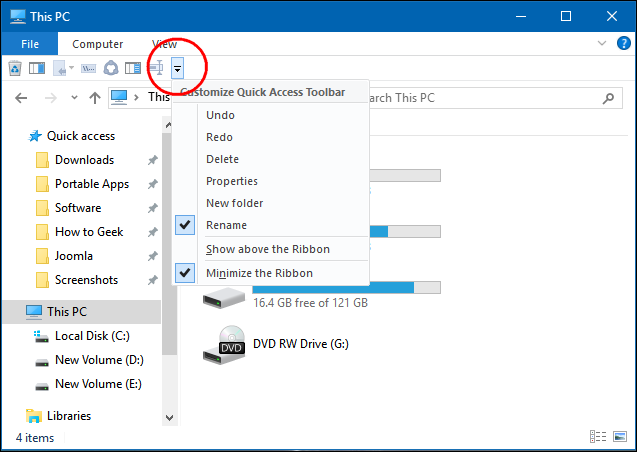

- #Display in the title bar access how to#
- #Display in the title bar access full#
- #Display in the title bar access code#

#Display in the title bar access full#
This feature is easy to implement, but as you can see, the width inhibits the display of the full path and filename. Quickly revisit recently visited websites. Select an item in the list to quickly revisit it. Click the dropdown list to see a list of recently visited web sites via your default browser, as shown in Figure F. This control displays more than the current file’s path location and filename. The QAT displays the document’s name and location. Click OK to return to the document, where you’ll find the document’s full path location displayed on the QAT ( Figure E).Īdd Document Location to the QAT.

If you want to limit the Document Locator to only the current document, change the option in the Customize Quick Access Toolbar (above). Click Add and Word will display the option in the list to the right ( Figure D).Click inside the resulting list and press D to quickly jump to the first option that begins with the letter D to avoid browsing the long list. To narrow the possibilities, choose Commands Not In The Ribbon from the Choose Commands From dropdown ( Figure B).You can also right-click the QAT and choose Customize Quick Access Toolbar or click the File tab, choose Options, and select Quick Access Toolbar in the left pane. Click the QAT’s dropdown and choose More Commands.To add this capability to the QAT, do the following:
#Display in the title bar access code#
Of course, you can always use the Save As feature or add a field code to the document to see the file’s location, but glancing at the QAT is quicker and easier.
#Display in the title bar access how to#
SEE: How to use Task Manager’s Processes tab to troubleshoot issues in Windows 10 Display file locationĭisplaying the current file’s location is just one of the options you can add to the QAT. You’re not limited to the options in the dropdown list you can execute macros and add other custom options. Figure AĪdd default options to the QAT for quick accessibility. Toggle the options to display or hide, accordingly. You can add some frequently used tools by clicking the dropdown and choosing from the list shown in Figure A. Out of the box, it displays only a few options. If not, it’s the small toolbar in the top-left corner. If you’ve been using the Office Ribbon for a while, you’re already familiar with the QAT. How to return first and last times from timestamps in Microsoft ExcelĬhecklist: Microsoft 365 app and services deployments on Macs Master Microsoft Office with this accredited training You don’t need a document for this technique, so there’s no downloadable example file. The QAT isn’t supported by any of the Office Online apps. I’ll be working in Word 2016 (desktop) on a Windows 10 64-bit system, but you can apply this to earlier Ribbon versions and to other Office apps. On the other hand, because this method utilizes the QAT, it’s available in all Office apps (except Access). Because this method uses the Quick Access Toolbar (QAT) it’s not supported by the menu versions of Office. The answer to Where did I save this file? requires only a quick glance at the QAT.


 0 kommentar(er)
0 kommentar(er)
